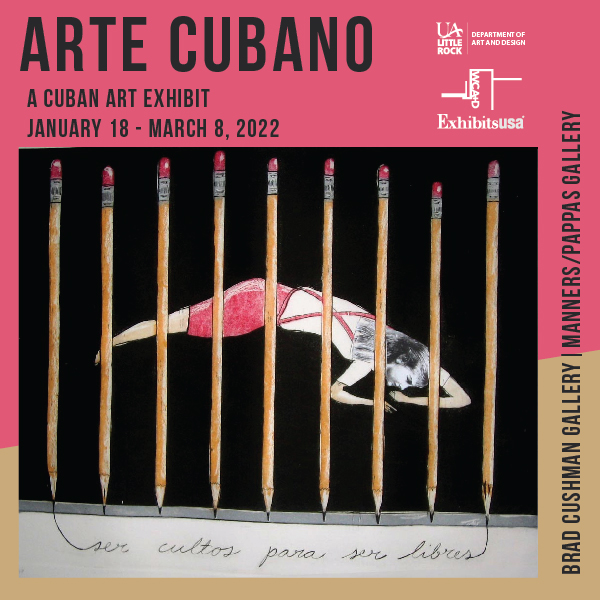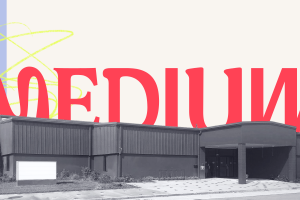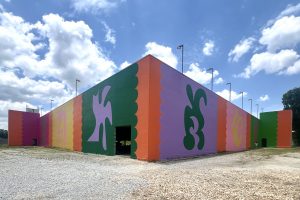“Arte Cubano” to open at Windgate Center of Art + Design

Arte Cubanoopens Jan. 18 at UA Little Rock in the Windgate Center of Art + Design. The new exhibition highlights a universally agreed-upon characteristic of the island’s art: an incredible diversity. Cuban art is so rich in large part because of its diverse cultural blend of African, European, and Latin/Caribbean influences. Add to these traditional roots the revolution of 1959, and Cuban art occupies a unique aesthetic place in the contemporary art world. Arte Cubano opens January 18 at UA Little Rock in the Windgate Center of Art + Design.
The traveling exhibition organized by Exhibits USA will be enhanced with artworks from the Arkansas Museum of Fine Arts, the UA Little Rock Permanent Collection, and a local private collection.
Building on changing relationships between the governments of the United States and Cuba, this timely exhibition reflects more than twenty-five Cuban artists’ ruminations on the quotidian, social, and political realities of the island and the contemporary world. The island geography and political intensity of Cuba inform the work in a way that is immediately identifiable, often concealing coded, even subversive, ideas while simultaneously celebrating the richness of Cuba’s cultural identity. Peeling away the layers of Cuban art often reveals a story of struggle caused by economic and political consequences, and the social upheaval that a true revolution produces.
The intensity and depth of meaning, with the specific physical and political context, make Cuban art immediately identifiable and powerful, and an important voice in the art world today. Most of all, the art is connected to Cuba itself. Both the island and the art are an unusual mix of the traditional and the modern, of the ordinary and the special, of simplicity and incredible complexity. The same can be said for the politics, the literature, the architecture, and the people. It confounds and entrances, it is rejecting and embracing.
Mid-America Arts Alliance/ExhibitsUSA co-organized Arte Cubano with the Center for Cuban Studies (NYC) to synthesize two extraordinary private collections generously made available for the project. This exhibition could not have been made possible without their collecting vision and loan generosity. The Center for Cuban Studies opened in 1972 and was organized by a group of scholars, writers, artists, and other professionals, in response to the effects of US policy toward Cuba.
Topics covered in this exhibition:
- Art and revolution; art and social discourse; art as propaganda.
- The arts, censorship, and freedom of expression.
- The role of art in economic development and tourism.
- The government’s role in arts education.
- National identity as part of artistic expression.
- Migration, immigration, exile, and diaspora.
Contemporary Cuban art is a “rara avis“ (strange bird), primarily the fruit of two significant historical impulses: tradition and renewal. The founding of the Academy of San Alejandro in Havana over two centuries ago, and its uninterrupted development in the years since, laid the groundwork for a visual arts education which has not only been decisive in the formation of artists, but also in the establishment of a critical, informed public reception and consumption of this art.
These impulses of tradition and renewal also forced the powerful changes that took place after 1959, when an unprecedented social structure emerged in Cuba, giving absolute priority and free education to all, teaching literacy to the country’s entire population, and creating a network of art schools in the most out-of-the-way places on the island. This interest climaxed with the opening of the University of Arts, Cuba (Instituto Superior de Arte, ISA) in 1976, which raised the country’s artistic training to the highest academic level.
Arte Cubano highlights a universally agreed-upon characteristic of the island’s art: an incredible diversity. Cuban art is so rich in large part because of its diverse cultural blend of African, European, and Latin/Caribbean influences. Add to these traditional roots the revolution of 1959, and Cuban art occupies a unique aesthetic place in the contemporary art world.
Gallery hours are 10 a.m. to 4 p.m. Monday through Friday. Entry is free.





Comments